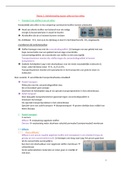Samenvatting
Summary diversity in teams and organizations - minor psychology in society
Het document bespreekt diversiteit in organisaties, met nadruk op authenticiteit, groepsdynamiek, gelijkheid, en managementuitdagingen. Het behandelt inclusie, intersectionaliteit, en spanningen tussen individuele expressie en gedeelde normen binnen multiculturele teams
[Meer zien]













